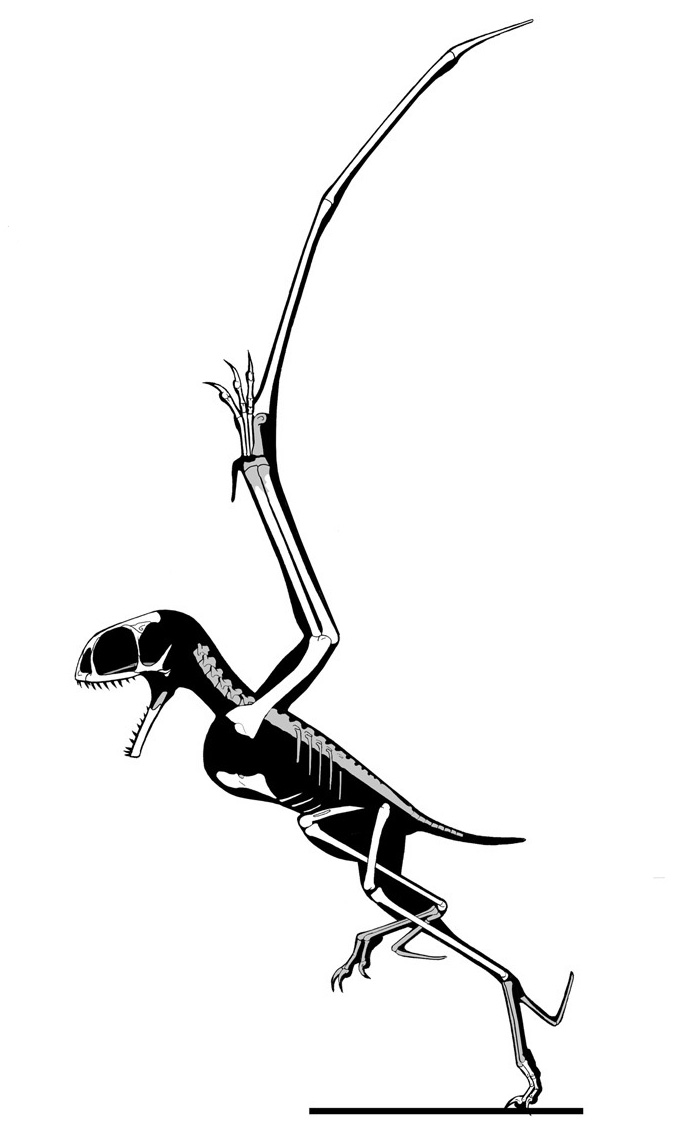|
|
Post by Viergacht on Dec 16, 2015 15:06:27 GMT
I want to make a stuffed anurognathus as a gift for a friend for present mas, but since I'm no expert on pterosaurs, could someone who is point me toward a good source online for what the wings looked like? No two artists seem to agree on where the membrane attached, and all I know is to avoid David Peters. I'd love to get Witton's book eventually, but I can't afford the outrageous shipping to SA :/
|
|
|
|
Post by Wood on Dec 17, 2015 19:24:57 GMT
I believe the consensus is that anurognathids, being rhamphorhynchoid pterosaurs, had fairly extensive membranes. Jaimie Headden's done a neat partial skeletal, but unfortunately the wing membrane isn't outlined.  This paper, Limb disparity and wing shape in pterosaurs, by G. J. Dyke,� R. L. Nudds, and J. M. V. Rayner (edit: I canny imbed links for some reason. Here it is: onlinelibrary.wiley.com/doi/10.1111/j.1420-9101.2006.01096.x/pdf ), suggests that, although the Rhamphorhynchoid Sordes pilosus is likely not representative of the patagia in all Pterosaurs, it is not necessarily incorrect to assume that it may be representative of some Rhamphorhynchoids, especially where data is absent, as in the case of Anurognathus. This would result in a membrane connecting from the wing finger right down to at least the knee, and a uropatagium would likely join the elongate pedal digit V to the tail. I'll try to fit in time to do a diagram for you in the near future. Hope this helps! Further edit: there exists a paper describing a second specimen of Anurognathus ammoni. There's not much detail on the patagia but, and I quote, "They [tissue impressions viewed under UV light] do not provide any information as to the structure of the brachiopatagium, but do provide some information about its extent, in particular showing that the brachiopatagium attached along the tibia at least as far as the ankle. There are no impressions of a uropatagium, though the presence of the elongate pedal digit V suggests that there was one. " Basically, that means that the main membrane stretched far down the leg, even to the ankle, and that the tail and legs were likely joined also. Another thing is that Headden's reconstruction looks to be digitigrade. As far as I am aware, this is incorrect, though expect another editorial when I have looked further into this. Editorial! Headden has done another skeletal, which looks far more in-keeping with the fossil data, and shows the outline of the patagia. You can find it here: qilong.deviantart.com/art/Launch-of-the-Flying-Frogs-348993165 |
|
|
|
Post by Wood on Dec 17, 2015 21:45:24 GMT
|
|
|
|
Post by Viergacht on Dec 18, 2015 12:39:08 GMT
Thanks folks!
|
|